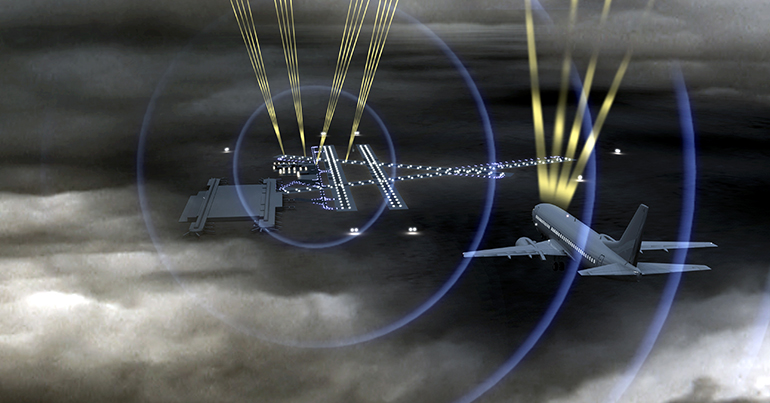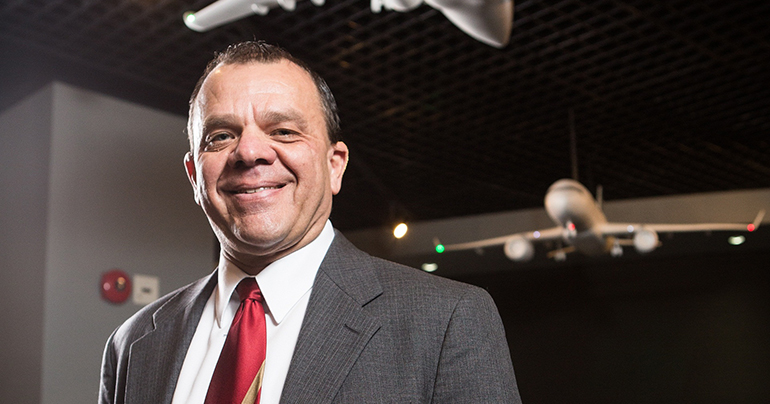In Cambodia and across Southeast Asia, the aviation industry has been growing at a rapid pace in recent years. Southeast Asia Globe sits down with Brian Davis, vice president of tech-based aircraft company Honeywell Aerospace, to discuss how emerging technologies could help the region’s airports prepare for continued growth

Can you describe the state of Cambodia’s aviation industry and highlight its biggest challenges?
The Cambodian aviation industry has been enjoying a period of remarkable growth over the past few years. Just last year, the country saw its fastest yearly growth on record at its three international airports, with passenger traffic reaching 8.8 million — a 25% rise from 2016. In order to prepare for future growth, Cambodia has already begun investing in the refurbishment of its existing airports and has made plans to construct new ones.
For example, last year Cambodia Airports completed a $100m upgrade of the terminals at Phnom Penh and Siem Reap airports. Furthermore, the government has already made plans to construct two new airports, with one totalling 2,600 hectares and therefore slated to be the ninth-largest airport in the world.
While airport expansion and development initiatives go a long way to ensure Cambodia is well equipped to support future growth in passenger traffic, they are often complicated and can take years to complete. This, coupled with rising passenger demand, continues to put a strain on safety and operational efficiency at existing airports within the country.
What do you believe are the most viable solutions for these challenges?
Investment in air traffic management (ATM) technologies would be advantageous for Cambodia, as they can act as an interim solution to help the country manage the rise in air traffic while airports are being built and expansions are underway. Additionally, they are able to support the country’s long-term passenger growth and avoid potential impact on airport operability and functionality.
Beyond airports, ATM technologies can help Cambodia make better and more efficient use of its airspace, which, unlike airport capacity, cannot be expanded. In other words, there is a limited number of commercial air traffic routes and approach trajectories that are available within any country.
Airlines in Cambodia also need to start leveraging smart technologies to achieve cost savings, especially as the aviation landscape in Asia Pacific becomes increasingly competitive. Connected aircraft solutions — such as predictive maintenance and flight efficiency services — can unlock savings, reduce operational costs and improve overall flying experience for airlines in Cambodia.

What are some examples of ATM technologies that could help Southeast Asian airports manage future growth?
There is a whole range of ATM solutions that can improve operational efficiency and safety within a country’s airports and airspace.
Ground-based augmentation systems, for example, are capable of supporting multiple aircraft on multiple runways simultaneously, through precision approaches and landings that help to improve safety and operational efficiency. This technology increases airport capacity while decreasing air traffic noise and weather-related delays. Moreover, it enables aircraft to fly fuel-efficient descents and saves on maintenance costs. Kuala Lumpur is in the process of installing such a system, which can yield maintenance savings of up to $400,000.
Beyond ground-based technologies for airports, airlines can also leverage airborne ATM technologies to enhance the safety of their aircraft during takeoff and landing. As airport runways witness greater aircraft movement, runway incursions and excursions become an increasingly pressing safety concern. To alleviate this, airports can invest in software upgrades that provide pilots with greater situational awareness as well as timely advisories and alerts, thereby greatly reducing the risk of runway incidents.
[manual_related_posts]
Are there any emerging aviation technologies that Southeast Asia’s airports should know about?
Connectivity, big data analytics and the “internet of things” are becoming a staple for technology companies. The aviation industry is no different, and is in the midst of a digital transformation itself — moving beyond hardware-based solutions and towards software-based services and applications.
We are heavily invested in the research and development of connected technologies, constantly studying the industry’s pain points and working on solutions that can improve the lives of everyone in the aviation industry. Among these include speech and noise recognition technologies for the cockpit, as well as sensors that are able to measure air conditions to reveal volcanic ash or any other environments that could adversely affect various aircraft systems.
Cambodia
Flourishing aviation industry must embrace new technologies
In Cambodia and across Southeast Asia, the aviation industry has been growing at a rapid pace in recent years. Southeast Asia Globe sits down with Brian Davis, vice president of tech-based aircraft company Honeywell Aerospace, to discuss how emerging technologies could help the region’s airports prepare for continued growth

